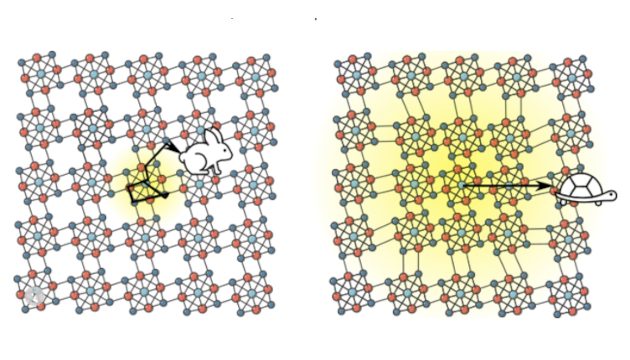Superatomic material is fastest-ever semiconductor … – eeNews Europe
MENU
A superatomic material is one where a cluster of atoms exhibits some of the properties of a single atom in terms of electron shells. Typically, this happens with the outermost electron of each atom entering an orbital that encompasses all the atoms in the cluster. And this can give rise to anomalous behaviours.
A team of researchers from Columbia University led by PhD student Jack Tulyag discovered that Re6Se8Cl2 can be stimulated to produce quasiparticles as carriers formed of excitons bound with polarons. The polarons in Re6Se8Cl2 have the special property of being capable of ballistic, or scatter-free, flow.
Tulyag was originally studying Re6Se8Cl2 because it was expected to be an insulator.
However, after finding the exceptional transport mechanism within the material, the team, ran a series of experiments that showed that acoustic exciton-polarons in Re6Se8Cl2 moved twice as fast as electrons in silicon and crossed several microns distance in the sample in less than a nanosecond. Polarons have a finite life of about 11 nanoseconds in this material.
The creation and control of these quasiparticles is done using light rather than an electrical current and gating, and as a result processing speeds in theoretical devices have the potential to reach femtoseconds.
By contrast electrons tend to move rapidly through a crystal lattice but lose energy and scatter due to interactions with phonons.
Tulyag compares the transport mechanisms to the fable of the tortoise and the hare in the diagram above. Although electrons have higher speed of transport they bounce around due to scattering and lose energy. In contrast the acoustic exciton-polarons move steadily over longer distances without losing energy and so have a higher mean velocity.
Like other emerging quantum materials Re6Se8Cl2 can be rendered in atomically thin sheets and so there is the potential to add 2D quantum effects to the superatomic properties. However, the material is unlikely to be deployed commercially because of the extreme rarity and expense of rhenium.
The research team is now looking for more abundant superatomic materials capable of outperforming Re6Se8Cl2 in terms of carrier transport.
Jakhangirkhodja Tulyagankhodjaev et al. Room temperature wavelike exciton transport in a van der Waals superatomic semiconductor. Science 2023. DOI: 10.1126/science.adf2698
www.columbia.edu
IEDM: Compound semiconductor transistor achieves record 1.46THz frequency
Intel, TSMC both set to report on stacked CFETs at IEDM
NeoLogic raises US$8 million for Quasi-CMOS processor
All material on this site Copyright © 2022 European Business Press SA. All rights reserved.

